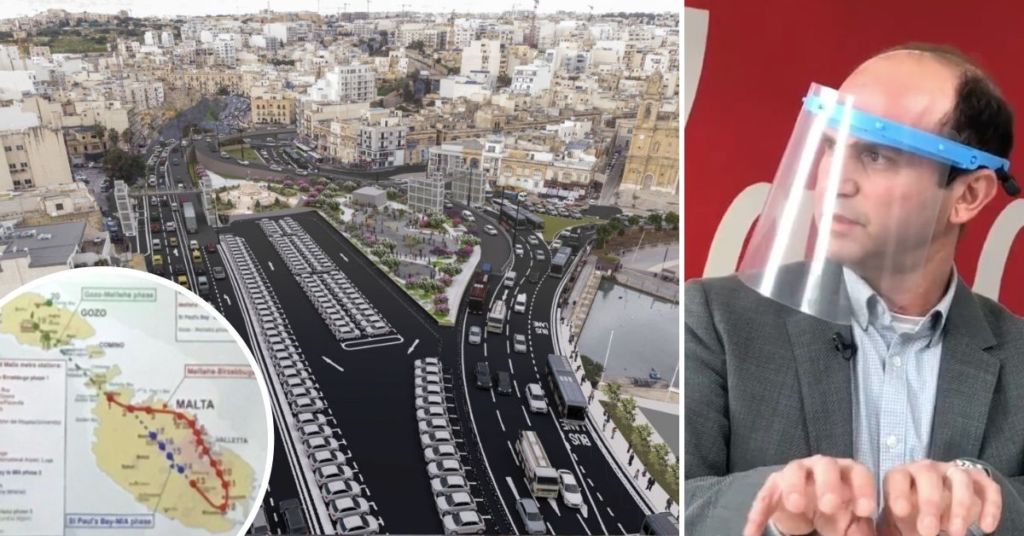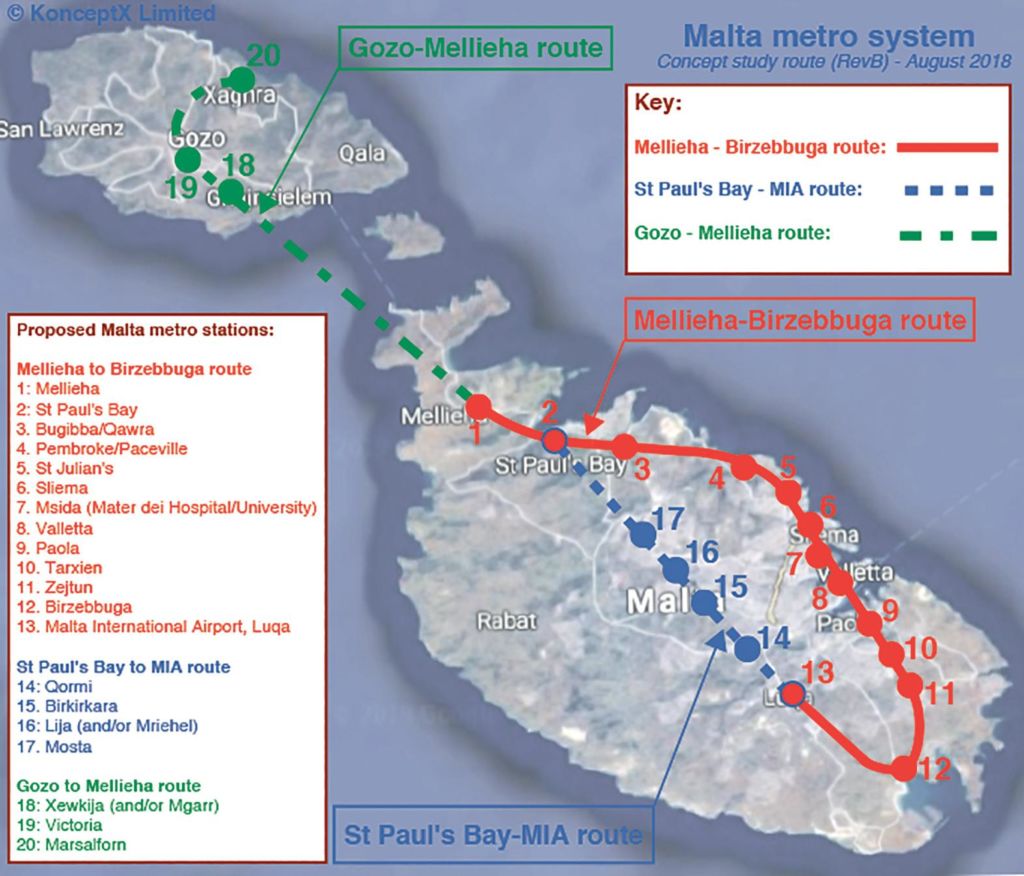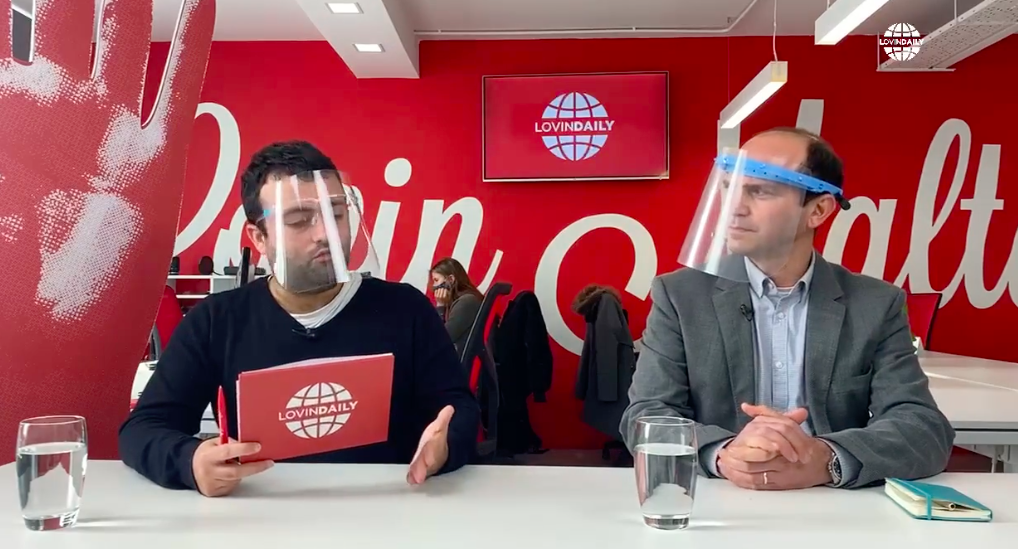WATCH: Forget Msida Creek Flyovers, Malta Needs A Metro Instead, Architect Urges

Official plans to build two new flyovers at Msida Creek have drawn quite a bit of criticism, but an architect has proposed a counter-solution to the town’s heavy traffic problems.
Konrad Xuereb, from the firm KonceptX, has laid out meticulous plans for a metro connecting Malta and Gozo, which he estimated will take ten years to construct.
One of his 20 proposed stations is actually in Msida, between Mater Dei and the University, and he’s even mulling a 21st one in front of the Msida parish church if needs be.
Once this is completed, he explained on Lovin Daily, the entire central Msida area can be pedestrianised.
“Malta has reached saturation point, and we can’t keep widening roads and chopping down trees,” Xuereb explained. “The conundrum is that the more you widen roads. the more you induce demand, so the problem is actually increasing.”
“We must rephrase the question on how to solve the problem of reducing cars. While the proposed flyovers might make you go faster over those 100m, they’ll take you faster to the next traffic jam.”
“In my practice, we’re strong advocates of the need to urgently shift to a mass transit system. Station 7 between University and Mater Dei can be complemented with another one in front of the church and then the whole area can be pedestrianised.”
Xuereb is proposing a single line built in three phases.
The first phase of the project will connect the airport to Mellieħa and make stops at Birżebbuġa, Żejtun, Tarxien, Paola, Valletta, Mater Dei, Sliema, St Julian’s, Pembroke, Buġibba, St Paul’s Bay and Mellieħa.
After five years, work would start on the second phase, connecting the airport to St Paul’s Bay via Qormi, Birkirkara, Lija/Mrieħel and Mosta. After two years, the most ambitious part of the project will commence, linking Mellieħa to Gozo with stops in Xewkija, Rabat and Marsalforn.
While the station locations were selected based on population and business density, towns without a station will be connected to stations via shuttle buses.
“There’ll be non-stop shuttle buses from Mosta to Rabat every five minutes, non-stop buses from Paola to the Three Cities, from Birżebbuġa to Marsaxlokk.”

“You can catch a bus for a few minutes and you’re round the corner from where you live.”
He estimates that the project will cost €4 billion, out of which €1.75 billion will come from public funds, and that it will be financially feasible after 30 years if 25% of the current population (excluding tourists) uses it on a daily basis at the cost of €2 per ticket.
Xuereb predicts that the COVID-19 pandemic could serve as a catalyst, both because mindsets have become more climate-conscious and because governments tend to react to economic downturns by investing even more in public infrastructure.
“The world, including Malta, has signed the Paris Agreement which comes with huge obligations, while the EU has set a target to be carbon-neutral by 2050,” he noted.
“To achieve this, we must move ASAP from a car-centric mentality. If Malta wants to retain its competitive edge, even from a tourism perspective, we need to shift from a car-centric to a people-centric mindset, which will see us obtain more funding and research rather than a brain drain.”
“In times of downturn, governments do tend to spend more on public projects and the beauty of [our proposal] is that the government will get a greater long-term return for every euro it spends.”

Meanwhile, with an alternative transport system in place, fewer people will use cars, which will allow the government to pedestrianise main areas like another architecture firm has recently proposed for St Anne’s Street in Floriana.
“These kinds of projects will work once there’s an alternative because one can then take active measures to pedestrianise roads. Not only in Floriana and Pieta, but even at the Mosta Square and main avenue, and Paola’s main avenue. This will catalyse businesses and more will start opening.”
“The current road widening measures are scientifically proven to induce more demand for roads so the problem will only get worse. It’s like a bottleneck… you can widen but ultimately you need to get out of the main road.”
“So what will we do then? Cut through the town centres? Road widening ultimately makes the problem worse…”